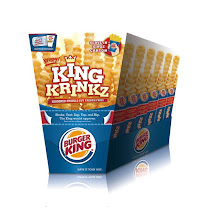
Market researchers like buzz words and they’ve divided consumers into clever groups ever since the Baby Boom generation, following with Generations X & Y (also called the Millennials for those consumers born between 1982-2001).
Analysts claim Millennials are more important for restaurants and food marketers than Boomers or Gen Xers because they make up the largest segment of the quick-service and fast-casual restaurant market. Marketing to them will offer new challenges, since they are the first “digital natives” in history: they have grown up in a world of computers and the Web, in contrast to older consumers who watched the new technologies deploy.
And because of the rise of so many food options, Millennials have a more sophisticated palate and demand higher quality, as well as natural and organic options. While the term “digital native” might seem like hot air, Millennials are the largest users of social media, cell phones and phone texting, resulting in greater social orientation and a “team” mentality. One manifestation of this team orientation is the popularity of lounge areas like those in Starbucks. Wi-Fi is becoming a major selling point for restaurants.
The rise of social media also offers restaurants and food marketers new outlets for their messages, though there is disagreement whether the group will reject overt advertising content on company-owned Facebook and Twitter sites. Most analysts agree the social media interaction with consumers must add value, and those marketers who have used the new channel for interacting with their consumer base are having the greatest success (e.g., restaurants offering specials via Twitter or text message). Millennials also display a “drive thru” mentality that demands fast service, convenient payment options and space for social interaction (Panera Bread, for example, with its ample public areas).
One reason for the rise of the fast-casual segment is the desire of Millennials to have a quality meal on limited budgets, a by-product of the experiences gained from their parents, the Boomers (once the largest restaurant-dining demographic in the country). The environmental and social consciousness of this group has begun to be reflected in college foodservice establishments, where composting, recycling, biodegradable serveware and utensils, and biofuels are now increasingly common (and demanded). Both restaurants and grocery retailers will be feeling the pressure to implement green practices as these consumers enter the workforce in larger numbers.
Excerpted from BSLG's weekly subscription news reader service Food Business News. To subscribe or for information about licensing, contact Broad Street Licensing Group (tel. 973-655-0598)
Excerpted from BSLG's weekly subscription news reader service Food Business News. To subscribe or for information about licensing, contact Broad Street Licensing Group (tel. 973-655-0598)
.gif)










No comments:
Post a Comment
Note: Only a member of this blog may post a comment.